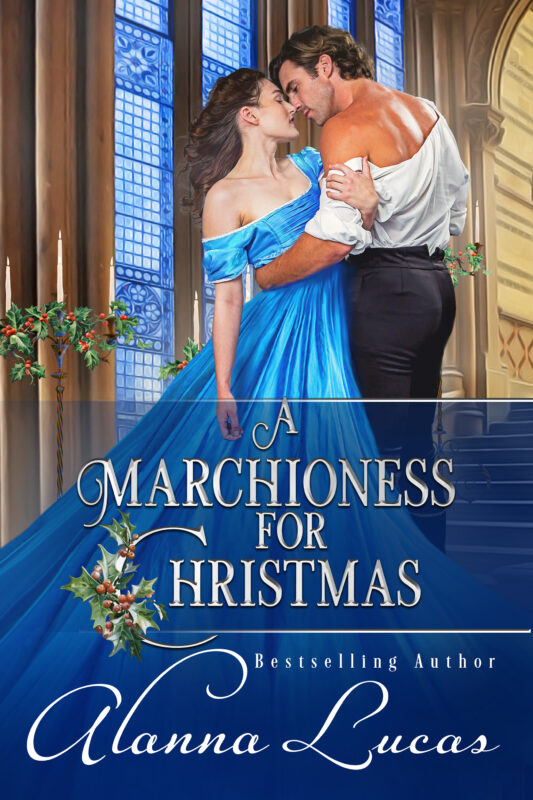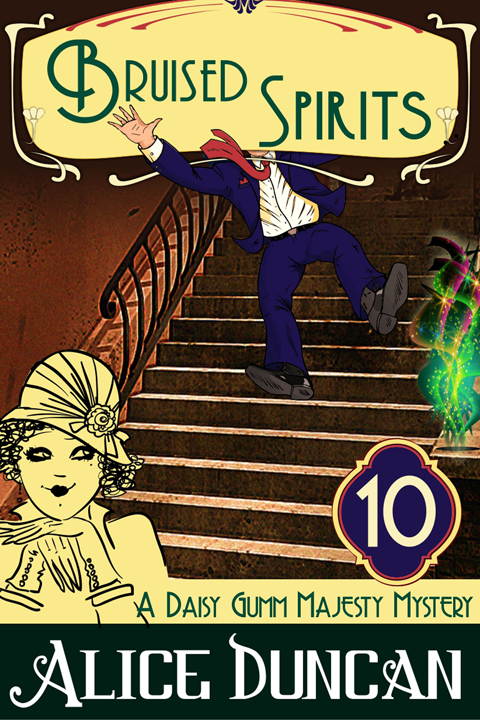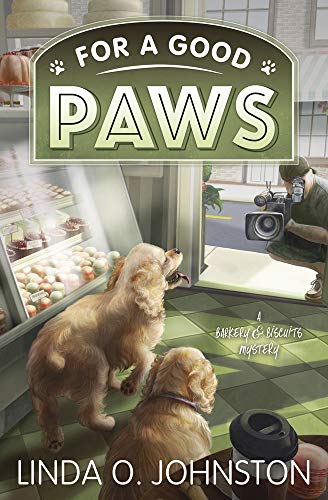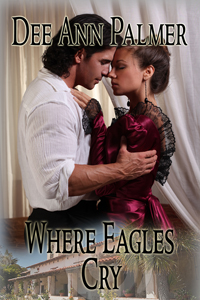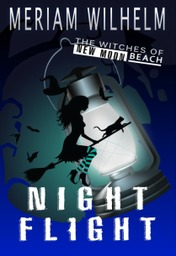How to Start an Online Course in Two Steps by Kitty Bucholtz
June 9, 2016 by Kitty Bucholtz in category It's Worth It by Kitty Bucholtz tagged as It's Worth It, Kitty Bucholtz, Online Class, Online ClassesYou probably know that I’ve been teaching online classes for about eight years now, maybe longer. I absolutely love to teach! The “usual” tech for doing this for the last decade or more has been to have your students sign up for a Yahoo Group that you create, and then you send them emails with the lectures, the students email you questions, and you email the group back with your answers.
That was a great way to do it for a while. But I wanted to add more to the classes – audio and video and live Q&A interaction. Enter the new online class platforms.
There are a lot of websites, platforms, plugins, and course-building sites out there now. A lot. I’ve tried a few, but I’ve recently moved everything to CourseLauncherHQ. I want to tell you a little about it in case you’ve been thinking about creating an online course that’s hearty enough to satisfy the needs and expectations of your 21st century audience.
[Note: I’ve recently applied to the affiliate program for CourseLauncherHQ. That means that if you use this company to launch your online course, and you use a link I gave, or you give them my name as the person who referred you, I may get some kind of affiliate commission. Please understand that if I make a mistake here about what they do or don’t do for clients, that is my mistake. I don’t work for the company, so I may not explain everything 100% correctly. Whew! Now that that’s done, let’s continue!]
The basic two steps for creating an online course are 1) pick a platform that allows you to focus on teaching, not having to learn a lot of new technology, and 2) design your course lessons. In this blog post, I’m going to focus on step one.
First of all, the best part for me about CourseLauncherHQ is that everything is already included and integrated. All the parts are already working well together. The learning platform is LearnDash on a WordPress site, and students can pay using PayPal and/or credit cards (using WooCommerce). Then the email list is integrated into both the landing page (where people first learn about your class) and the classroom itself (after people pay – therefore separating your email list into two parts automatically – potential students and paid students).
The second best part is that the customer service is amazing!! I feel I’m pretty tech-y, but I’ve never used any of this tech. Sometimes a little knowledge can be worse than none at all. But every time I have a question, someone answers. If necessary, they arrange a video call with me to answer my questions. I can pay extra for them to do everything for me, but even though I’ve chosen to learn to do most things on my own, if I “break” my site by doing something ignorant, they’ll fix it for me! The class sites are all backed up every night so no data is lost!
And in the class they just started on Monday, you can learn everything you need to know and get your site up and running – and even start getting paid if you get students to sign up – in just four weeks! That’s what I did in December, and I’m going through the new class again now to make sure I don’t forget anything when adding in my class that I’d originally hosted on another site.
The best way to understand all this is to read the information on the page here, CourseLauncherHQ. If you decide you’re interested, you can still get into this class through next Monday, June 13. And if you mention my name, you can get in at the discounted pricing of $1597. I know, it’s a lot of money. But when I tried to put together all the little pieces myself last year, I spent more than that and had no one to help me when I screwed things up. Plus there’s a 60-day money-back guarantee!
This may not be at all what you’re interested in doing, but I didn’t want to not tell you about it and find out later (especially after the price goes up) that you could’ve used this information. Or maybe you have a friend who needs to know about this. Anyway, now you know. 🙂 I hope you find it helpful!
Kitty Bucholtz decided to combine her undergraduate degree in business, her years of experience in accounting and finance, and her graduate degree in creative writing to become a writer-turned-independent-publisher. Her novels, Little Miss Lovesick, A Very Merry Superhero Wedding, and Unexpected Superhero are currently available on Amazon. The free short story “Superhero in Disguise” and the new short story “Welcome to Loon Lake” are available wherever ebooks are sold. You can find out about her courses on self-publishing, marketing, and time management for writers at her website Writer Entrepreneur Guides.
Upcoming Round Table Chapter Meeting
June 6, 2016 by Linda O. Johnston in category Pets, Romance & Lots of Suspense by Linda O. Johnston, Writing tagged as Berkley Prime Crime, Linda O. Johnston, Silhouette NocturneMY NEW TEAMMATE, VELLUM.PUB
June 5, 2016 by Tracy Reed in category Pink Pad by Tracy Reed tagged as 12 Titles in 12 months, Tracy Reed, vwellum.pubI was searching for a subject to post about this month and sort of drew a blank. In my last post, I gave you an update of my 12 Titles in 12 Months project. I no longer refer to it a challenge, because it’s a fun project.
In the past five months of this project, I’ve learned I can make deadlines and stick to them a lot better than in the past. I’ll be honest, there were a couple of times I didn’t think I was going to make my deadline.
Here’s my process and why using Vellum is good for me. When I complete a book, I do a read through and then pass it on to my number one Critic, my mom. Once she’s done, I make the corrections and then forward the book to my Beta Readers. When they’re done, I review their comments and make the necessary corrections. Then forward the book to my Editor. Depending on how long the book is, it could take her a couple of weeks to edit it. Then I review her edits, do another review and prep the file for the formatter. Depending on how long my book it, this step can take me a while.
Once I’ve done my reviews, it’s on to the formatter. Again, depending on the length and her schedule, this can take as much as five days. Then I review the file and if there are typos or glitches, I carefully log them and send the file back to her. There have been times I’ve over thought things, or missed something as simple as a line I forgot to move up. That simple error means I have to send the file back to the formatter. She’s really good about turning around the file for something so small quickly. All of these steps eats away at my time.
Now that I’ve added VELLUM.PUB to my team, I’ve also bought myself some time and breathing room. I don’t feel as pressured. I think some of the typos or glitches were a result of trying to make those deadlines and scared to have to go back and make changes. I am in love with this software.
As an indie or self-pub author, I’m always looking for ways to save time and money. I was introduced to Vellum.pub, by my friend Kitty Bucholtz. When I took it for a test drive, I couldn’t believe how easy it was. In less than an hour, I had a fully formatted book. That hour includes set up and launching to the various outlets. It happened so quickly, that I thought I had missed or forgotten something.
After playing with it a week, I finally released my first Vellum.pub formatted book. My new release, INTENTIONAL CURSE. Once I reviewed the Kindle file, I was very impressed. It looked just like what my formatter was doing for me. Now, this doesn’t mean I won’t every use a formatter again, it just means I have another option.
My formatter is amazing and very patient with me. However, because I use a MAC and she uses a PC, there would be slight challenges when it came to fixing typos or glitches on my part. I always felt bad having to go back and tie up her time for small typos [a letter or period in the wrong place.] For ease, I would give her a detailed list of typos and their location so she could find them quickly.
My formatter is cool about making the corrections and turning the file around quickly. I don’t know about anyone else, but even now when I go back and read some of my earlier releases, I’ve stumbled across an errant typo. I have a couple of books I found typos in that I have to send back to her for changes.
However, with Vellum.pub, there’s no charge to go back and make a change or correct a typo.
Another added advantage to using Vellum.pub, I’m able to add fancy chapter headings, first paragraph design, section breaks and one of my favorites, images. In INTENTIONAL CURSE, I included the covers of the books I excerpted. Vellum.pub, also allows you to add purchase links for each format or outlet you use.
So far, there’s nothing about this software I don’t like. It’s easy and painless to use. With my formatter, I get one free set of corrections and I’m charged for any additional corrections. The cost is also amazing and is based on title, not word count or outlets. One title, is $29.99, Ten titles, $99.99 and unlimited is $199.99. To be on the safe side, I bought the ten titles to start.
I also, found their response to customer service emails to be fairy quick. One of my concerns or questions, was if I liked it could I upgrade. I was told that I could. Another plus. [I will be going back and upgrading to the unlimited plan.]
This tool is perfect for me, because I like knowing I can go back at anytime and make changes without an additional cost. It also gives me an extra week in prep time. In the past, I would book my editor at least a month before sending the file to the formatter. And book the formatter, about two to three weeks before release day. Once the formatter completed my files, I took a week to ten days, to review the file and make any corrections. Then if it was clean, I set it up for release. Now, I’m able to breathe a little before formatting. I don’t feel as stressed as in the past.
I formatted my recent release, the night before and then I reviewed it the following morning. This delay was because I was sleepy, otherwise, I may have released it immediately. For the record, instant release is an option now, because if needed, I can go back, make the necessary changes and get the revised file up immediately.
If you haven’t tried VELLUM.pub, I recommend you give it a try.
12 TITLES IN 12 MONTHS…update
Okay, so I didn’t think I was going to do an update on my project. Last month I didn’t include a cover tease for the August release, because I wasn’t sure about the cover. Up until a couple of days ago, I was going to change the cover. But something amazing happened, I finished the title. YEAH!!! And when I played around with the cover, the proposed new cover one, became the cover for part two in the series.
I was a little nervous about this title because it seemed like I had gotten stuck. When I started writing this, I new it was going to be either a novelette, less than 20,000 words. But around 14,000 words, while I was praying one morning, I got a revelation that I should switch from first person to third person POV. I wrestled with this for a couple of days. Finally, last Thursday, while sitting in the salon, I started re-writing my book. By late Friday night, I had re-written the 14,000 words. In fact, by the time, I finished re-working the original pages, I ended up with an additional 1,000 words and renewed excitement about the story.
I’m so excited because, a week later, I finished the novella. And when I did, it left the door open for a novella series and a new set of characters for me to love. YEAH!!!
I’ll check in with you next month.
Tracy
Tracy Reed
www.readtracyreed.com
Fiction for Women Who Love God, Couture and Cute Guys
Criticism…
May 24, 2016 by A Slice of Orange in category Columns tagged as Isabel SwiftI just read Anthony Lane’s 5/16/16 review of “Captain America: Civil War” and “The Lobster” in The New Yorker. And, to semi-quote Peter Finch in Network, I really just can’t take it anymore!
Clearly, Mr Lane has not gotten the excellent advice a friend gave me in college when I asked him (a little desperately): “What do you say when a friend asks you to read something they wrote and tell them what you think? What if you didn’t like it? Do you risk the truth? Or lie for the sake of the friendship?”
I’m not comfortable with a polite lie; it seems to denigrate the friendship. Yet very few really want to hear the unvarnished truth about something they have created, labored over and are taking the risk of sharing with you.
What do you say?
The advice, which I have internalized in assessing all creative work was: “Liking or not liking is not at issue. When you read something, think about what the creator was trying to accomplish. Did they achieve their goal?”
This opened a door to looking at any material and considering it in its own right. Not against my personal opinion, but against itself, and if I have the background, in its context.
I would always laugh (quietly) when people would comment on series romances and say: “Well, it’s hardly literature!” And I would think Why are you making this absurd comparison? Neither is The New York Times, but you probably read it every day. Assess something in its own right, or against its peers, in its own context.
Of course everyone is entitled to their personal taste: I like this, I don’t like that. I don’t even have to have a reason. But that doesn’t require any critical faculties or judgment, really. It’s just your feeling, your opinion.
True criticism, in my opinion, is to put aside your personal tastes, your possibly narrow and judgmental vision of what is ‘proper’ or ‘acceptable’ or ‘intellectually validated’ and open your mind and heart to what the work itself is trying to achieve, how it relates to the history of material trying to achieve similar goals, and how it may succeed, fail, or break new ground.
Mr Lane seems deeply respectful of the surreal, science fiction and absurdist vision of “The Lobster,” but childishly, rudely dismissive and disrespectful of an comic-book based action adventure film (which, full disclosure, I very much enjoyed).
I realize that many critics and their readers delight in creating a polarized world of Good and Bad, but it lacks humanity, offers little insight, and seems…well, small.
Vintage Perfumes: The Fragrances That Defined Each Decade by Connie Vines
May 13, 2016 by A Slice of Orange in category Archives tagged as Chanel#5, Coco Chanel, com, Connie Vines, fashion, novelsbyconnievines, OCC RWA, perfume, Vintage, writingNothing can transport you back in time like a fragrance. They say that your sense of smell is the most powerful and evocative sense, and it’s true: Emeraude reminds me of my mother, Quorum my husband, and Halston Z-14 reminds me of my teens and guys who bathed in a cologne—rather than indulging in a spritz or two.
“A woman who doesn’t wear perfume has no future.†– Coco Chanel
This may have been a dramatic overstatement, however, when I was in the business of selling perfume, quotes such as these, gave women confidence when she entered a room! And Chanel No. 5 is one of the most popular fragrances of all time, a bottle of it is sold every 30 seconds (this includes me ïŠ, too).
Coco Chanel also stated that women should wear perfume wherever they hoped to be kissed. Wise words indeed – please note that this does not mean ‘layered’ in perfume, as perfume counter girls armed with spray bottles will advise you. No one should be able to smell your perfume unless they’re that little bit closer than is polite, then it should be something delicious and intoxicating.
Whilst researching which perfumes were popular over the decades I was surprised how many of these I’ve actually owned. Over the years, I’ve tried Anais Anais, Shalimar, Opium, Poison, Red, and Patou 1000 before I finally settled on Chanel No. 5. Of course, I selected one of the most expensive perfumes on the market, but I guess there is a good reason why it’s been a bestseller since it was launched in 1921!
Vintage Perfumes: The Fragrances that Defined Each Decade
It’s surprising how many of these perfumes are still best sellers even now, but then why would they go out of fashion?
Popular Perfumes in the 1920s.
Chanel No. 5, launched in 1921, was an immediate success even though it was the preserve of the rich at this time. Famously worn by Marilyn Monroe, the square bottle design was rumored to been inspired by the design of a whiskey decanter.
Guerlain’s Shalimar launched first in 1925. It is one of the most popular fragrances of all time and was said to be inspired by Mumtaz Mahal, the women for whom the Taj Mahal was built. The perfume was named after the Gardens of Shalimar in Lahore, Pakistan, which were also built for her.
Popular Perfumes in the 1930s.
Tabu by Dana Fragrances which were popular in the 1930s included Tabu by Dana (a sexy evening perfume), which was launched in 1932 and Je Reviens by House of Worth, both of which remain available today.
In 1934 Elizabeth Arden developed Blue Grass.
Perhaps the most notable perfume of the 1930s was Joy by Jean Patou, voted Scent of the 20th Century at the Fragrance Foundation FiFi awards in 2000. It was created in 1929 (the year of the Wall Street Crash) and even though it was marketed as ‘the world’s most expensive perfume’, it was a huge hit. It is also considered to be one of the greatest floral fragrances of all time.
Popular Perfumes in the 1940s.
L’Air du Temps by Nina Ricci (in a pretty glass bottle with a bottle stopper fashioned as two doves). After the war lighter and fresher perfumes became more popular, one of which was the still-popular Miss Dior by Christian Dior in 1947
Popular Perfumes in the 1950s.
Femme de Rochas was a rich, sultry perfume aimed at the femme fatale created in 1944.
Arpege by Lanvin is a floral romantic perfume, created in 1927, but became particularly popular during the 1950s.
Max Factor’s Hypnotique and Primitif (as advertised by Jean Patchett above) were popular and an affordable perfume for the masses compared to the fragrances by the big fashion houses.
Soir de Paris by Bourjois was a popular fragrance amongst teenagers during the 1950s. It was discontinued in 1969, but relaunched in 1992
Popular Perfumes in the 1960s.
Oh! de London by Tuvache, YSL Rive Gauche was a popular 1960s scent
Hubert de Givenchy created L’Interdit for Audrey Hepburn and she wore the perfume for many years before it was released to the public in 1957. She featured in the adverts for L’Interdit throughout the 1960s.
Tuvache’s Oh! de London is a bright sparkling scent which perfectly captured the mood of the swinging sixties.
Guerlain introduced the heady oriental scent Chamade in 1969.
Popular Perfumes in the 1970s.
Charlie by Revlon and Diorella by Christian Dior, a perfume for the independent woman who has everything, were both very popular.
Opium by Yves Saint Laurent, launched in 1977, and was a heady, rich oriental evening perfume.
Christian Dior released the classic perfume Diorella, which combines citrus and musky notes.
Anais Anais by Cacharel, launched in 1978 and was an immediate hit (my brother gave this to me as a Christmas Gift).
Did I list one of your favorite perfumes?
Or, perhaps a fragrance you’ve never dared to try?
Perfuming is an art. Indulge your senses, enjoy the fragrance—it’s mystical, it’s magical, is the new youïŠ.
Happy Reading,
Connie Vines
Affiliate Links
A Slice of Orange is an affiliate with some of the booksellers listed on this website, including Barnes & Nobel, Books A Million, iBooks, Kobo, and Smashwords. This means A Slice of Orange may earn a small advertising fee from sales made through the links used on this website. There are reminders of these affiliate links on the pages for individual books.
Search A Slice of Orange
Find a Column
Archives
Featured Books
A MARCHIONESS FOR CHRISTMAS
Will Antonia be forced to endure yet another bleak midwinter?
More info →BRUISED SPIRITS
It's 1924 and Daisy Gumm bands with friends to help Lily Bannister, whose abusive husband nearly killed her.
More info →FOR A GOOD PAWS
Barkery owner Carrie Kennersly is leashed with a tale of two culprits.
More info →WHERE EAGLES CRY
Jilted by love in 1834, Cara Lindsay sails from Boston to Mexico’s rugged California to begin a new life with a favorite aunt.
More info →NIGHT FLIGHT
Olivia Merriman’s witchy wiring has all gone haywire and if she doesn’t get it under control soon she’s going to lose her boyfriend, her magic and a whole lot more!
More info →Newsletter
Contributing Authors
Search A Slice of Orange
Find a Column
Archives
Authors in the Bookstore
- A. E. Decker
- A. J. Scudiere
- A.J. Sidransky
- Abby Collette
- Alanna Lucus
- Albert Marrin
- Alice Duncan
- Alina K. Field
- Alison Green Myers
- Andi Lawrencovna
- Andrew C Raiford
- Angela Pryce
- Aviva Vaughn
- Barbara Ankrum
- Bethlehem Writers Group, LLC
- Carol L. Wright
- Celeste Barclay
- Christina Alexandra
- Christopher D. Ochs
- Claire Davon
- Claire Naden
- Courtnee Turner Hoyle
- Courtney Annicchiarico
- D. Lieber
- Daniel V. Meier Jr.
- Debra Dixon
- Debra H. Goldstein
- Debra Holland
- Dee Ann Palmer
- Denise M. Colby
- Diane Benefiel
- Diane Sismour
- Dianna Sinovic
- DT Krippene
- E.B. Dawson
- Emilie Dallaire
- Emily Brightwell
- Emily PW Murphy
- Fae Rowen
- Faith L. Justice
- Frances Amati
- Geralyn Corcillo
- Glynnis Campbell
- Greg Jolley
- H. O. Charles
- Jaclyn Roché
- Jacqueline Diamond
- Janet Lynn and Will Zeilinger
- Jeff Baird
- Jenna Barwin
- Jenne Kern
- Jennifer D. Bokal
- Jennifer Lyon
- Jerome W. McFadden
- Jill Piscitello
- Jina Bacarr
- Jo A. Hiestand
- Jodi Bogert
- Jolina Petersheim
- Jonathan Maberry
- Joy Allyson
- Judy Duarte
- Justin Murphy
- Justine Davis
- Kat Martin
- Kidd Wadsworth
- Kitty Bucholtz
- Kristy Tate
- Larry Deibert
- Larry Hamilton
- Laura Drake
- Laurie Stevens
- Leslie Knowles
- Li-Ying Lundquist
- Linda Carroll-Bradd
- Linda Lappin
- Linda McLaughlin
- Linda O. Johnston
- Lisa Preston
- Lolo Paige
- Loran Holt
- Lyssa Kay Adams
- Madeline Ash
- Margarita Engle
- Marguerite Quantaine
- Marianne H. Donley
- Mary Castillo
- Maureen Klovers
- Megan Haskell
- Melanie Waterbury
- Melisa Rivero
- Melissa Chambers
- Melodie Winawer
- Meriam Wilhelm
- Mikel J. Wilson
- Mindy Neff
- Monica McCabe
- Nancy Brashear
- Neetu Malik
- Nikki Prince
- Once Upon Anthologies
- Paula Gail Benson
- Penny Reid
- Peter Barbour
- Priscilla Oliveras
- R. H. Kohno
- Rachel Hailey
- Ralph Hieb
- Ramcy Diek
- Ransom Stephens
- Rebecca Forster
- Renae Wrich
- Roxy Matthews
- Ryder Hunte Clancy
- Sally Paradysz
- Sheila Colón-Bagley
- Simone de Muñoz
- Sophie Barnes
- Susan Squires
- T. D. Fox
- Tara C. Allred
- Tara Lain
- Tari Lynn Jewett
- Terri Osburn
- Tracy Reed
- Vera Jane Cook
- Vicki Crum
- Writing Something Romantic
Affiliate Links
A Slice of Orange is an affiliate with some of the booksellers listed on this website, including Barnes & Nobel, Books A Million, iBooks, Kobo, and Smashwords. This means A Slice of Orange may earn a small advertising fee from sales made through the links used on this website. There are reminders of these affiliate links on the pages for individual books.










